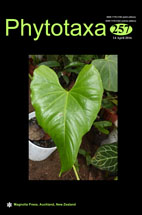Abstract
Acacia hydaspica J.R.Drumm. ex R.Parker (1921: 309) and A. pseudoeburnea J.R.Drumm. ex Dunn (1922: 185) were treated as conspecific with A. eburnea (L. f.) Willd. (1806: 1081) by Chakrabarty & Gangopadhyay (1996: 609). However, when these taxa were recently transferred to Vachellia they were treated as distinct species, namely, V. hydaspica (J.R.Drumm ex R.Parker) Ali (Jan. 2014: 3; this same combination was also made by Ragupathy et. al. in March 2014: 176), V. pseudoeburnea (J.R.Drumm. ex Dunn) Ragupathy et al. (2014: 177) and V. eburnea (L.f.) Hurter & Mabberley in Mabberley (2008: 1021), respectively. Neither Ali (l.c.) nor Ragupathy et al. (l.c.) provided distinctive features of the taxa to justify their adoption of species rank, although Ragupathy et al. (l.c.) did say that they were following the classification of Kumar & Sane (2003) and Roskov et al. (2005) rather than that of Chakrabarty & Gangopadhyay (1996). The present studies for the ‘Flora of India Project’ currently in preparation revealed that the dividing lines between Vachellia eburnea, V. hydaspica and V. pseudoeburnea are not clear cut (Table 1) and therefore they are best treated as a single species, V. eburnea. The necessary synonymy (and typification) is therefore made here.

